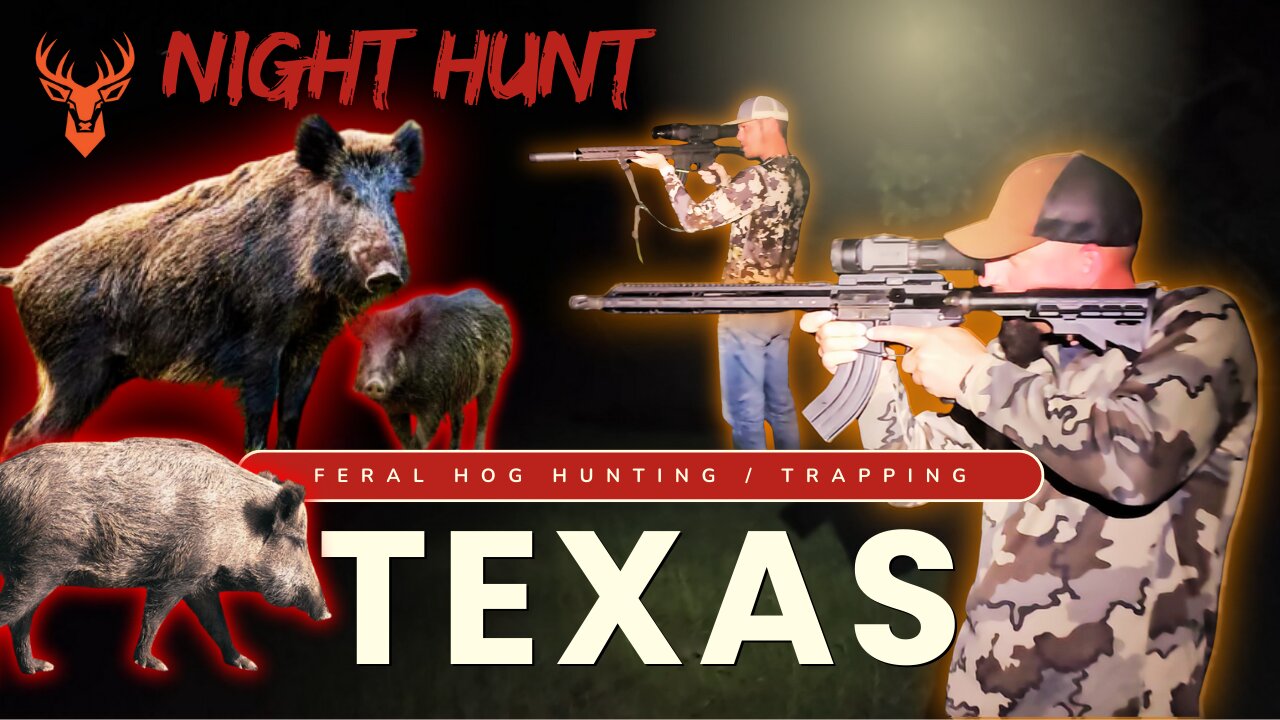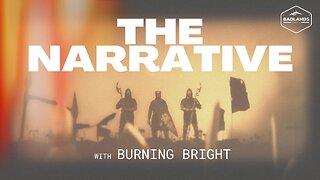Premium Only Content

Night Hunts and Deadly Effective Traps | Feral Hog Hunting/Trapping in TEXAS | Ol' Tripod
In this episode, KAMPwild goes to Texas to night hunt Feral Hogs and attempt to trap the feral beasts. Thanks to friends who live in the Dallas area we were able to go down to Texas and have a Adventure of a life time!
-- TEXAS Episodes --
Episode 1 of 3 - Pond Hopping
Episode 2 of 3 - Feral Hog Hunting/ Trapping
Episode 3 of 3 - Lake Fork Bass Fishing
In this episode you'll find information about Hogs but here is a larger track of information for those who like to read...
-- Feral Hogs in America --
Feral swine are not native to the Americas. They were first brought to the United States in the 1500s by early explorers and settlers as a source of food. Free-range livestock management practices and escapes from enclosures led to the first establishment of feral swine populations within the United States. In the 1900s, the Eurasian or Russian wild boar was introduced into parts of the United States for the purpose of sport hunting. Today, feral swine are a combination of escaped domestic pigs, Eurasian wild boars, and hybrids of the two.
The current U.S. feral hog population is estimated at between six and nine million animals
These animals cause significant damage, with annual agricultural and ecological losses estimated at $2.5 billion.
They root up soil, destroy crops like corn and peanuts, damage forests, and transmit at least 34 pathogens to livestock, wildlife, and humans.
Their omnivorous diet and adaptability make them a major invasive species, and their population growth is described as a "feral swine bomb" by the USDA due to the rapid expansion and difficulty in control.
Efforts to manage the population include hunting, trapping, and coordinated removal programs, but these are often hampered by the animals' intelligence, reproductive rate, and the illegal release of hogs by hunters seeking to expand hunting opportunities.
Feral swine often look very similar to domestic hogs, but are generally thinner with thicker hides of coarse bristly hair and longer tusks.
Because of their extensive crossbreeding, feral swine vary in color and coat pattern, including combinations of white, black, brown, and red. Piglets are often striped or spotted, but lose this coloration as they mature. Some look like pure Russian or Eurasian wild boars, while others look more like domestic pigs. Feral swine should not be confused with the collared peccary (javelina), a native pig-like mammal of the American Southwest which is generally much smaller than feral swine (15–25 lbs.) and silver-grey to black in color with a defined lighter colored collar.
Adult feral swine weigh between 75 and 250 pounds on average, but some can get twice as large. This invasive species can reach 3 feet in height and 5 feet in length. Males (boars) are larger than females (sows).
Feral swine are muscular and strong, and can run up to 30 miles per hour. Like deer and domestic pigs, feral swine have cloven hooves. Although feral swine tracks look similar to deer tracks, they have a blunter-tipped toe, and their tracks have a square shape, compared to the pointed heart-shaped tracks of deer.
Feral swine can breed year-round and can have up to two litters of 4 to 12 piglets per year. Since they become sexually mature at 6 to 8 months of age, feral swine populations have the potential to double in size in 4 months, which is why population management is so important.
Feral swine generally travel in family groups, called sounders, composed of two or more adult sows and their young. Sounders can vary in size, including a few individuals to as many as 30 members. Adult boars usually live alone or in bachelor groups, only joining a sounder to breed. Because they are usually active at night, feral swine are less frequently seen during daylight hours, particularly in hot, humid climates. It may be easiest to identify feral swine in your area by looking for signs of damage.
-
 1:22:35
1:22:35
Man in America
10 hours agoThe DISTURBING Truth About Child Protection Services w/ Ryan Matta
78.2K29 -
 14:16
14:16
Robbi On The Record
13 hours ago $16.48 earnedThe Collapse of Masculinity: What Happened to Men?
24K33 -
 2:32:07
2:32:07
Side Scrollers Podcast
7 hours agoSPECIAL OCCASSION: ADMITTING THE TRUTH...
105K5 -
 3:26:18
3:26:18
Barry Cunningham
8 hours agoLIVE FROM THE RED CARPET: President Trump Melania Trump, Sylvester Stallone, KISS And Others
71.9K12 -
 7:37:49
7:37:49
SpartakusLIVE
8 hours agoEarly ARC Stream for EXPEDITION Prep || WZ Buybacks LATER
43.6K1 -
 3:14:11
3:14:11
SavageJayGatsby
5 hours ago🎂 Birthday Variety Game Stream!
26.7K -
 2:17:03
2:17:03
TheSaltyCracker
7 hours agoMeme Warfare Goes Nuclear ReeEEStream 12-07-25
97.3K228 -
 1:29:32
1:29:32
Adam Does Movies
12 hours ago $3.13 earnedBest Action Movies! - Live
29K1 -
 3:01:37
3:01:37
Badlands Media
21 hours agoThe Narrative Ep. 49: The Trump Doctrine
54.5K24 -
 LIVE
LIVE
This is the Ray Gaming
4 hours ago $0.84 earnedThe Fire Rises | Rumble Premium Creator
196 watching